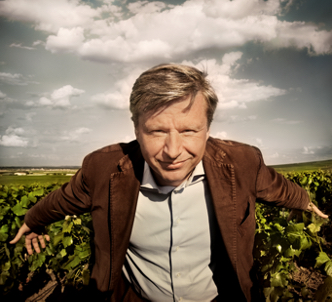
Jean-Baptiste Lecaillon
Jean-Baptiste Lécaillon (1966 vintage) was born and raised in Reims, Champagne. An agricultural engineer and oenologist with degrees from the Ecole Nationale Supérieure Agronomique and the Institut des Hautes Etudes de la Vigne et du Vin in Montpellier, he joined Louis Roederer in August 1989.
After 10 years in Champagne, California at Roederer Estate, Tasmania creating Jansz and in Bordeaux developing Château de Pez, Jean-Baptiste Lécaillon was appointed Chef de Caves at Champagne Louis Roederer in 1999.
A year later, in 2000, he was also given responsibility for Louis Roederer's unique 245-hectare family estate. For the first time in Champagne, a Chef de Caves was also managing a large wine estate: this pioneering appointment was decisive in focusing on the quality of the grapes!
Since 2006, Jean-Baptiste Lécaillon has been Deputy Managing Director and Head of Vinification for the Louis Roederer estates. He is also co-chairman of the Quality and Sustainable Development Commission of the Comité Champagne (CIVC) and a member of the Comité Régional de l'Appellation Champagne (CRINAO).
Since joining Champagne Louis Roederer, he has constantly raised the bar in terms of winemaking and organic viticulture, drawing inspiration in particular from Permaculture, the relevance of which he discovered in the early 1990s with Australian pioneer Bill Mollisson. With experience on three continents, it's no surprise that he oversees the production of the "Roederer Collection" family of brands, including Roederer Estate, Scharffenberger cellars, Domaine Anderson, Merry Edwards and Diamond Creek in California, Ramos Pinto in Portugal's Douro region, Domaines Ott in Provence, and Château de Pez (Saint-Estèphe) and Château Pichon Longueville Comtesse de Lalande (Pauillac) in Bordeaux.
One of his main challenges as Chef de Caves is to maintain, year after year (despite weather conditions that are increasingly impacting viticulture), the House style at its highest level, while developing and increasing the quality of the wines.
But for the past 20 years, the Maison's greatest challenge has been in the vineyard: to continue to increase the quality of the fruit by using a truly "sustainable" viticulture that adapts to climate change and respects the terroir, expressing the uniqueness of each place.
